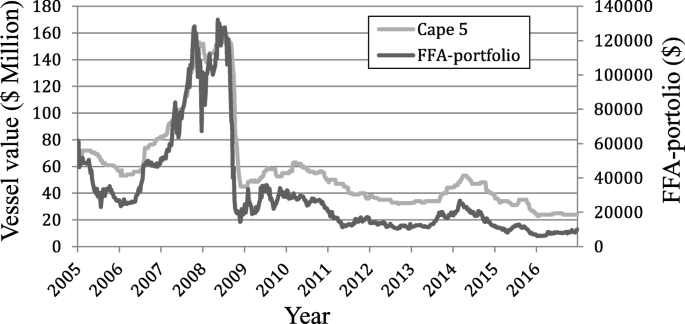News & Notice
공지사항
| 제목 | Watch out for these 7 payroll fraud schemes Sol Schwartz | ||
| 작성일 | 2022-09-15 | 작성자 | 박세찬 |

Employees have often been reported to be carrying out misconducts like misclassifying other employees and using ghost employees to pad hours, and scamming businesses out of money. Only employees are not responsible for all payroll frauds, as employers also commit fraud by withholding their employees’ salaries and the benefits they are entitled to. There have been cases when employees on the management level have issued payments to themselves or family members from businesses by using fake names and credentials for fictitious employees. Payroll frauds have caused businesses to lose money at the hands of dishonest employees, leading to employees losing out on their rightfully deserved benefits. We can look at some common payroll frauds to find out how they are committed and how they can be avoided.
Sometimes, employers misclassify workers willingly to save costs like unemployment taxes, staff benefits, and payroll taxes. Workers’ compensation fraud is when an employee fakes an injury or falsely claims they got injured at work to collect workers’ compensation. Alternatively, this type of fraud can cost an insurance company a lot of money, which in turn can prompt them to raise their premiums.
For instance, you may classify someone as a full-time employee, a part-time employee, or an independent contractor. In short, there are many ways in which the amount of payroll paid out can be fraudulently expanded. This is difficult to spot when the amounts involved are small, so you must consider the cost of prevention activities in relation to the amount of savings that will be generated. Generally, independent contractor vs. employee boils down to control — how much control you have over when, where and with what tools a worker performs the job. We can help you navigate the rules so you don’t mistakenly call an employee a contractor.
Preventing the Most Common Types of Payroll Fraud
Payroll fraud is the theft of money from an organization via the payroll processing system. Without the correct procedures in place, payroll fraud goes unnoticed for a considerable amount of time causing an organization to fall into losses. For example, ghost employees, timesheet fraud, and false expense reimbursement.
Former Stockton police chief charged with payroll fraud – AG Design & Marketing Services
Former Stockton police chief charged with payroll fraud.
Posted: Wed, 02 Aug 2023 21:08:35 GMT [source]
Therefore, it’s important to do some research to find out how to properly classify your employees. Refer to the IRS’ Employer’s Supplemental Tax Guide for worker classification guidelines, or fill out Form SS-8 to get the IRS’ own judgment. Employees could take the paycheck of another employee who is absent, and then cash the check for themselves. This can be avoided by having the paymaster retain all unclaimed checks in a locked safe, and by requiring that everyone receiving a paycheck prove his identify with a driver’s license or some similar document. Ghost employees are essentially fictitious (bogus) employees that have been invented by fraudulent employees or external administrators (e.g., bookkeeper, accountant). Payroll fraud occurs when company money is stolen through the payroll system.
Addressing fraud
It’s important to learn what a 1099 form is and how to use it to prevent employee misclassification. These global cases suggest that the best way to guard against payroll fraud is to have a good segregation of duties. No one person should be able to perform all the functions of creating a new employee, and preferably there should be three people to complete the process from start to finish.
Such fraudulent activities can continue until they are detected or when the fraudulent employee leaves. Some staff may figure out loopholes in the payroll Payroll fraud system to avail the incentives or bonuses they didn’t earn honestly. Don’t rush to sign up with the first payroll service provider you come across.
International Tax Monthly
Aside from the fraudster(s), of course, there are others in the company in positions to ensure this doesn’t occur and finger-pointing isn’t going to solve anything. But knowing all the different schemes and how to prevent and detect them might. When you conduct audits, you review your financial records to find where money is going. You can find gaps in records when you conduct regular audits, which can help you determine if employees are committing payroll fraud. It’s imperative that your organization vets a high-quality payroll service to do this, and that you audit their performance as well to ensure they aren’t abusing the payroll system. However, relying on a payroll service provider can significantly reduce the risk of insiders committing payroll fraud.
- This can be detected by matching pay rate authorization documents to the payroll register.
- A more expensive alternative is to use biometric time clocks, which uniquely identify each person who is signing into the time keeping system.
- If employees have access to your payroll system, they might alter their hourly rate so they get paid more wages.
- These global cases suggest that the best way to guard against payroll fraud is to have a good segregation of duties.
- If you discover a breach, report it to law enforcement and notify any employees (and other stakeholders) who may be affected.
- It also helps maintain data integrity and prevent any unauthorized alterations to employee records.
In addition to understanding what payroll fraud is, it’s important to know what the most common forms of payroll fraud are so you can be on the lookout. You limit the amount of money that might be compromised in the case of payroll fraud, keeping the rest of your funds secure. Although there’s no way to guarantee that employees won’t commit payroll fraud, you can take measures to prevent it or catch it quickly. Since payroll fraud can take so many forms and is typically performed by insiders, it’s often challenging to detect. For teams to identify payroll fraud and root it out, it’s crucial that teams know what to look for. Activity monitoring that allows risk professionals to identify account changes is a great way of identifying these threats.
What is Payroll Fraud? How to Prevent Payroll Fraud
This term is used to describe when one employee improperly punches a time clock for another employee to inflate hours on a time sheet. For example, a worker might leave early and ask a “buddy” to punch out for him or her several hours later. Alternatively, employees could fraudulently manipulate timekeeping devices themselves or simply falsify time sheets. Employee payroll fraud is a serious threat, but adopting these safeguards can dramatically reduce the risk your company faces in this area. If you have payroll software, ask about tools that can automate this tedious process. Some will allow you to upload documentation of the expense so that you have backup handy when you decide to do a thorough review.

The good news is that you can be proactive about preventing payroll fraud. The first step is understanding how it happens, and the next step is stopping it. Like Wonder Woman deflects any incoming threat with the power of her Bracelets of Submission, you too can ward off threats to your payroll funds. As there are several compliance laws that a company must follow, it becomes easier to identify such frauds if your organization continues to implement compliance policies stringently.
Effective checks and balances
If small businesses don’t have the right payroll securities in place, there can be a huge toll caused by this theft. From accurate calculations to unlimited payroll runs, it’s time to see what Patriot’s award-winning software can do for your business. Schedule a demo today to learn how Unit21’s Risk & Compliance Infrastructure can help your team manage payroll fraud threats—and keep customers (and your organizations) safe.

By understanding the types of payroll fraud and applying procedures to prevent them, you can reduce your chances of becoming a victim. Some steps are as simple as clear pay and clock-in guidelines, and others may already be available to you. Also, investing in a payroll software that has anti-fraud tools will be beneficial.
Employees have been found to act in collusion, perpetrating “slip and fall” accidents at work. They might become injured at home, but falsely claim that the injury occurred at work to qualify for the more lucrative benefits offered by workers’ compensation. Employees can commit payroll fraud by clocking hours they don’t work or secretly increasing their compensation rate.
A Ghost employee is a person who is on the payroll but does not work for the company. The employee is entitled to all the bonuses and benefits just like other employees, however, the money is going straight to the fraudster’s account. Timesheet fraud involves paying employees incorrectly for the hours they work. In most cases, organizations overpay employees based on manipulated timesheet submissions.
For small and medium businesses, payroll fraud can be a significant obstacle. You can source the services of a reputable payroll service provider to help you mitigate the risk of payroll fraud. You can benefit from their technology solutions that leverage Artificial Intelligence (AI) and Machine Learning (ML) for timely detection of fraud and help prevent financial loss to your organization. These are just a few of the warning signs to watch out for—remember, payroll fraud can take many forms. That’s why you should review your company’s payroll and accounting records on a regular basis. With QuickBooks Payroll, all of your payroll information is in one place, making it easy to review records and look for irregularities.
- This can be done in collusion with the other employee, who then shares the extra pay with the payroll employee, but it is also sometimes committed alone.
- One of the goals of the Attorney General is to help educate the public and to assist them in making wise choices about what charities to support.
- For teams to identify payroll fraud and root it out, it’s crucial that teams know what to look for.
- When an employee is classified as a contractor (1099-form employees), for instance, but they’re really a full-time employee… the company is guilty of tax fraud.
- As a small business owner, you can face serious penalties for misclassifying your workers.
NorthOne is proudly made for small businesses, startups, and freelancers. We believe that better banking products can make the whole financial system more inclusive. Also, they may access the payroll system to falsify their wages and increase their hourly pay rates. Workers provide different classifications depending on the number of hours they work, their job role, their relationship with the company, and other details. For instance, workers are often classified as full-time, part-time, or contract workers. As a small business owner, you can face serious penalties for misclassifying your workers.
